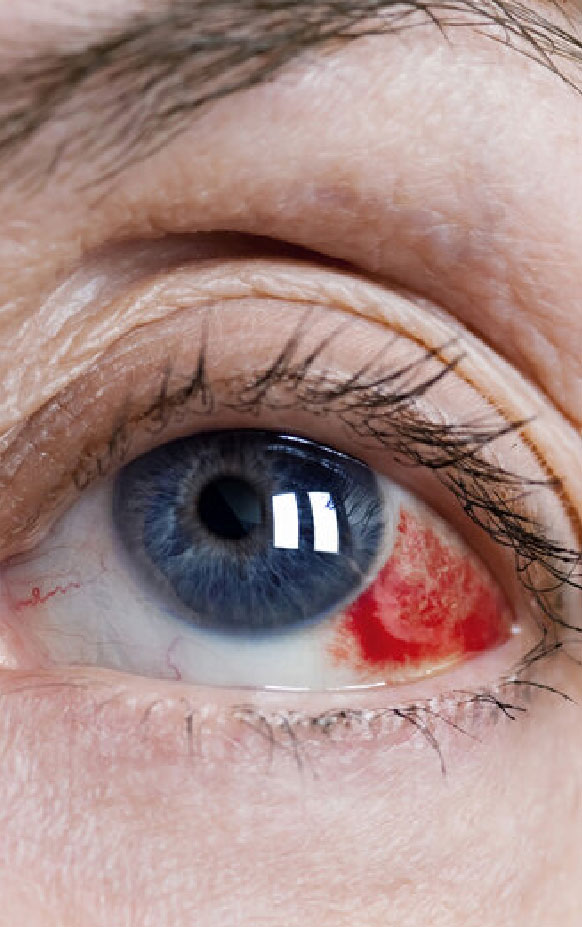Color vision deficiency (also called color blindness) is a vision disorder in which a person…

Glaucoma
Glaucoma is a group of eye diseases in which damage to the optic nerve leads to loss of vision. The most common type of glaucoma, called chronic open-angle glaucoma, usually develops gradually over a number of years. A clear, watery liquid called aqueous fluid flows in and out of a small space at the front of each eye (the anterior chamber) to bathe and nourish nearby tissues and remove wastes. In chronic open-angle glaucoma, the drainage angle (the channel through which aqueous fluid drains from the eyeball) malfunctions and the fluid does not drain properly, causing the normal pressure inside the eye to slowly rise. If not controlled, this abnormally high pressure can permanently damage the optic nerve and other parts of the eye, causing vision loss and, eventually, blindness.
In chronic open-angle glaucoma, the drainage angle malfunctions and the aqueous fluid does not drain properly. As the fluid builds up, pressure inside the eyeball increases, potentially causing permanent damage to the optic nerve and other parts of the eye.
In acute closed-angle glaucoma, the entrance to the drainage angle becomes blocked, causing a sudden, severe increase in pressure inside the eyeball. Acute closed-angle glaucoma is a medical emergency that requires immediate medical treatment to clear the blockage and prevent blindness.
Treatments
Although damage to the optic nerve caused by chronic open-angle glaucoma is permanent, treatment with medication and surgery can usually slow the disease or prevent it from progressing. An ophthalmologist will prescribe medication, usually given in eyedrops, that either reduces the pressure inside the eyeballs by slowing the flow of fluid into the eyes or improves fluid drainage from the eyes. Because pills may produce more serious side effects, they are prescribed only if the eyedrops are ineffective. You will need to take the medication for the rest of your life to control the pressure in your eyes. If the drugs lose their effectiveness over time or cause unpleasant side effects, a doctor may change the dosage or prescribe a different medication.
To treat chronic open-angle glaucoma that cannot be controlled with medication, the doctor can use a laser (a highly concentrated beam of light) to alter the shape of the drainage angle to make it easier for fluid to drain from the eye. This painless procedure usually is performed in the doctor’s office or in an outpatient facility. In some cases, the effects of laser surgery may wear off over time and the procedure must be repeated. If glaucoma cannot be controlled with medication or laser surgery, an ophthalmologist may recommend a surgical procedure called trabeculectomy, in which an alternate outlet for aqueous fluid is created to lower the pressure inside the eyeball. This type of surgery is performed in a hospital.
Emergency treatment for acute closed-angle glaucoma involves a brief, painless surgical procedure called iridotomy. In this procedure, the doctor usually uses a laser to create a small drainage hole in the iris to change the shape of the structure of the eye and help fluid drain from the eye to relieve pressure inside the eyeball. Iridotomy usually is performed in the doctor’s office or in an outpatient facility.




